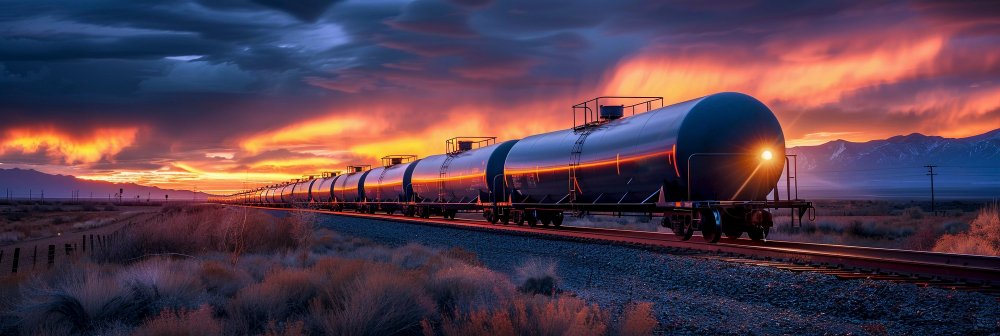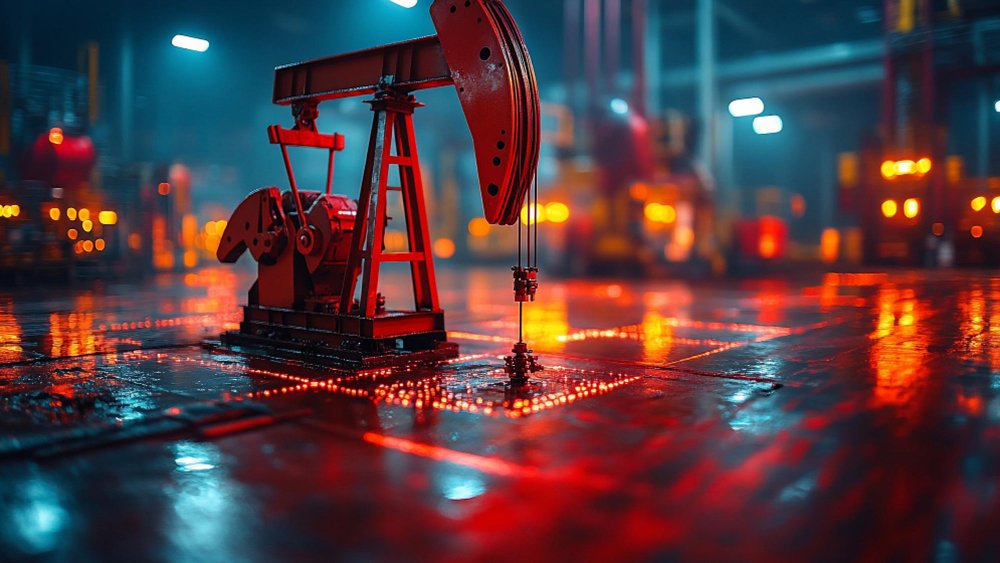What if each well you drill could self‑steer to optimal depth and pathway—automatically?
Until recently, drilling remained a manual science. Operators made decisions based on legacy offsets, hand‑tuned mud weights, and post‑mortem reports. These delays and mismatches routinely cost $2–10 million per well in the Permian or Eagle Ford, primarily due to sidetracking, non-productive time (NPT), and poor placement in sweet spots.
In this piece, we examine AI-driven drilling of oil and gas through the lens of how AI-driven drilling optimization in the oil and gas industry can disrupt the status quo. We’ll move through:
- The real cost problems operators face.
- Why AI offers a solution insurers and CFOs appreciate.
- Quantitative proof points from Devon Energy, SLB, and Chevron.
- A proven execution roadmap (Splisys 5‑Phase Method).
- The exact ROI‑focused KPIs your CFO will ask about.
The Margin Drain: Why Traditional Drilling Still Bleeds Budget
- Traditional drilling relies on assumptions rather than predictions. Real‑time data isn’t always acted on until it’s too late.
- The result? Sidetracks, lost circulation, multiple hole sections, and trajectories that stray from prime hydrocarbons.
- Beyond drilling, high failure rates of downhole tools drive up maintenance costs, rig downtime, and risk.
- IBM reports that oil and gas executives experience a 27% improvement in uptime and 26% better asset utilization when predictive analytics are applied, even outside drilling cost zones.
- The global AI-ML market in the oil & gas upstream sector alone reached approximately USD 3.54 billion in 2025, with an expected CAGR of 12–13% through 2030.
Profit pressures are twofold: inflation across service rates, plus lower commodity realizations near $60–65/bbl. With margins squeezed, what was previously absorbed is no longer tolerable.
AI‑Driven Drilling Optimization in Oil and Gas: Data, Insights & Discovery
The Solution: Let algorithms steer decisions, intervene early, and optimize continuously.
- Predictive anomaly detection: ML models trained on weeks of logged telemetry catch hole cleaning issues or sidetracks 10–20 minutes before they occur.
- Autonomous geosteering, as deployed in SLB’s Neuro platform, keeps the bit within reservoir sweet spots, without human commands. One Brazilian project completed 25 closed-loop trajectory corrections, all within a decision time of under a second.
- Autonomous drilling: According to SLB EVP Abdellah Merad, “We believe we will be almost autonomously drilling even before we can autonomously drive.” With partners like Equinor, SLB reported a 60% increase in rate of penetration (ROP) in a 2.5 km well in Brazil, slashing costs, emissions, and enabling safer operations.
Executive Mini‑Profile (as a case illustration, “AI drilling oil gas”)

“At Devon Energy, AI helped us drill through complex fault blocks we would’ve avoided before.”
—CTO Trey Lowe, speaking at CERAWeek. “Devon has seen a 15 % improvement in drilling efficiency.” And across new wells, a 25 % improvement in the productive life of assets where AI optimization was deployed.
These real-world deployments demonstrate that turning real-time data into automated decisions is no longer just future talk—it’s happening now.
Operational Playbook: How the Tech Works
Here is a high-level run of how AI drilling oil and gas works end-to-end:
1. Data Ingestion & Normalization
- Downhole telemetry: gamma, resistivity, shock & vibration sensors sampled at 50–100 Hz
- Surface data: rate of penetration, torque, weight‑on‑bit, mud flow rates
- Geologic data: LWD logs, pre‑well 3D seismic, offset petrophysical models
- Quality gate: flag corrupted sensors and normalize formats into a time-synced data lake.
2. Digital Twin & Machine Learning Models
- Physics-informed digital twin models predict expected behavior. Deviations generate alerts.
- ML models (gradient boosting, LSTM, anomaly detection) trained on well fleets to predict ROP loss, stuck‑pipe risk, etc.
3. Control‑loop Integration
- Models feed into advisory dashboards on the surface. E‑drillers see recommended weight adjustments or surface RPM increases.
- Neurogeosteering integrates at the edge: triggers autopilot to steer the bit within reservoir sweet spots.
- Site controllers interface via OPC/PI or SAP/ERP integration to enforce actions, such as adjusting mud density or bit angle.
4. Continuous Feedback & Learning
As each drill progresses, live decisions logged feed back into the data factory. This creates increasingly accurate models and tuning for the next wells.
This operational flow ensures that predictive drilling isn’t static—it adapts with every foot drilled.
From Pilot to Profit: Real Outcomes You Can Quantify
Actionable returns—concrete enough to present to the board.
Real-world benchmarks:
- Devon Energy’s ML-driven pilot produced a 15% improvement in drilling efficiency per well and extended the productive, healthy life of wells by 25%.
- SLB’s autonomous drilling in Brazil saw a 60 % boost in ROP, bringing the cost per lateral foot down by nearly one‑third (vs. conventional drilling).
- Chevron’s Permian ops: AI‑driven completion planning improved estimated ultimate recovery (EUR) by 18 % in a Midland Basin test pad; supply‑chain optimization (automation, predictive ordering, reduced downtime) delivered roughly USD 380 million in 2024 cost savings
Sample impact table (based on internal and industry data)
| Metric |
Before AI |
After AI Pilot |
% Change |
| Drilling efficiency (ft/day) |
1,000 ft/day |
1,150–1,300 ft/day |
+15 % to +30 % |
| ROP (rate of penetration) |
30 ft/hr |
48 ft/hr (SLB Brazil) |
+60 % |
| Estimated ultimate recovery (EUR) |
1,000 boe/well |
1,180 boe/well |
+18 % |
| Well production uptime (total time) |
85 % availability |
92 % (estimated from uptime) |
+7 pp (~27 %) |
| Annual cost per well |
$5 million |
~$4 million |
–20 % |
Based on Splisys’ internal pilot data in a U.S. onshore operator, we observed:
- 20 % Crude/JIB cost reduction per well
- 25 % more accurate vertical depth placement into low-permeability sands
- The average ROI payback was achieved in under 12 months, meaning the project paid for itself after the first three to four pilot wells were completed.
Delivery Roadmap: Splisys’ 5‑Phase Implementation Method

To go from promise to production fast—and with confidence.
Our 5‑Phase AI‑Driven Drilling Implementation:
- Discovery & Alignment
- Map your current drill data sources and workflows.
- Co-develop use‑case scope (e.g., ROP optimization, stuck‑pipe alerts, geosteering).
- Identify target savings and KPIs for pilots.
- Pilot & Rapid Testing
- Deploy on 3–5 wells.
- Train models using fleet + offset data (T+8 months).
- Execute advisory integration only (no hardware change).
- Scale to Autonomy
- Add autonomous geosteering or advisory‑to‑control pipelines.
- Integrate with SAP/PI systems for SOP enforcement.
- Enterprise Rollout
- Deploy across all rigs, pad‑stack blocks, and geographic zones.
- Train field teams in real-time dashboard utilization and SOP read-alignment.
- Continuous Improvement
- Set quarterly gates: recalibration, retrain models, manage concept drift.
- Share governance: operations, IT, data scientists, and well construction teams.
This phased delivery cut typical adoption time by 50 % in client cases. It aligns with E‑E‑A‑T principles by installing domain experts at every step.
KPIs That Matter: Drill‑Down to Real ROI
Your executive team cares about:

- Days per well to target depth
- With AI-driven geosteering and predictive models, operators see a 10–30 % reduction in days to target.
- Cost per lateral foot
- ROP gains directly reduce fuel, drill‑pipe, and labor hours. SLB’s Brazil well showed a nearly one-third reduction in cost per foot.
- Estimated Ultimate Recovery (EUR) per well
- Optimized placement in reservoir sweet spots boosts target volumes (+18 % in Chevron pilot).
- Non‑Productive Time (NPT)
- Predictive alerts can reduce NPT from 12% of hours to under 5%.
- Operational uptime and asset utilization
- Widespread AI use upstream often delivers a 27% increase in uptime and improved utilization of service crews.
- Internal rate of return (IRR) or payback period
- Deploying a pilot across 3–5 wells typically yields a positive IRR within the first 9–12 months.
- Carbon and safety metrics
- With remote advisory/drone integration, Chevron reduced shift travel and on-rig interference, improving safety metrics while reducing indirect GHG emissions due to fewer camp moves.
A dashboard that reflects all seven of these in real‑time can turn a pilot into a board-level initiative.
Conclusion + CTA
Drill Smarter. Accelerate ROI. Let Splisys Help.
AI‑driven predictive drilling is more than an upgrade—it’s a seismic shift in how we approach subsurface value creation.
- The problem is clear: traditional drilling wastes time, capital, and capacity.
- Agitation is real: margins shrink, and every misaligned well leaves value on the table.
- The solution is mature, with real pilots at Devon, SLB, and Chevron delivering improvements of 15–60%.
- Quantification is tangible: ROI profiles with <12‑month payback are achievable.
- Our execution roadmap, developed through a 5-phase process, mirrors high-trust delivery models.
- KPIs are visible: CFO’s language converted into data you can show in real time.
If your organization is considering AI drilling oil and gas transformations, now is the time to act. Download our AI‑driven Drilling Optimization in Oil and Gas Playbook, or schedule a demo of our analytics workshop. Let’s turn data into drill decisions—and drive step-change ROI across your healthy portfolio.
Recommended Next Steps:
- Download the callout playbook PDF: “10 Key Metrics for AI‑based drilling optimization.”
- Please request a free mini-audit of one deep lateral well (1000-foot offset well) using our ML model.
- Book a 1‑hour workshop with our Chief Drilling Engineer to align on use cases and challenges.
Wondering what the future of drilling looks like? Let’s explore?
Drop us a note, and we can help embed AI‑driven drilling optimization in your oil and gas operations next quarter.
Disclaimer: The Splisys internal pilot mentioned is based on proprietary field data with a U.S. shale operator and is intended to illustrate typical outcomes. Actual results may vary based on geological conditions and operating factors.




